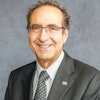The number of vacation days taken by physicians -- and working on patient-related tasks while on vacation -- are tied to physician burnout, a study published January 12 in JAMA Network Open found.
Researchers led by Christine Sinsky, MD, from the American Medical Association in Chicago reported that overall, nearly 60% of U.S. physicians took three weeks of vacation or less per year, while seven in 10 physicians worked while on vacation, with both findings associated with higher rates of burnout.
However, among specialty disciplines, radiologists and radiation oncologists have the highest proportion of physicians taking more than three weeks of vacation. Also, radiologists had among the lowest percentage of physicians working for at least 30 minutes while on vacation.
“System-level efforts to ensure physicians take adequate vacation and have coverage for clinical responsibilities, including electronic health record [EHR] inbox, may reduce physician burnout,” Sinsky and co-authors wrote.
Vacation is a time for relaxation, an escape from everyday stresses like work, and an opportunity to recharge the social batteries. However, the researchers noted that not much is known about how vacation behaviors among physicians like radiologists are tied to burnout and professional fulfillment.
Sinsky and colleagues investigated the number of vacation days taken per year and the magnitude of physician work while on vacation and how they may be associated with physician burnout and fulfillment. They considered individual and organizational characteristics.
The team included survey data collected between 2020 and 2021 from 3,024 physicians. Of these, 115 were radiologists and 33 were radiation oncologists. The team also used the Maslach Burnout Index and the Stanford Professional Fulfillment Index in its study.
Among the respondents, 1,790 of 3,004 physicians (59.6%), took 15 or fewer days of vacation in the last year. Going deeper, 597 of 3,004 physicians (19.9%) took five or fewer days. Additionally, 2,104 respondents (70.4%) reported working on patient care-related tasks while on vacation, and 988 of 2,988 respondents (33.1%) reported working 30 minutes or more on a typical vacation day.
The researchers also found that among specialty disciplines with more than 30 respondents, radiologists and radiation oncologists had among the highest proportion of physicians taking more than three weeks of vacation at 74.8% and 62.5%, respectively.
The specialties with the lowest proportion included family medicine, physical medicine and rehabilitation, general internal medicine, and emergency medicine.
Radiologists also had among the lowest percentage (20%) of physicians working 30 minutes on a typical vacation day. Meanwhile, 35.5% of radiation oncologists reported this amount of work during vacation.
The team found via multivariable analysis that concern about finding someone to cover clinical responsibilities and financial concerns were tied to decreased likelihood of taking more than three weeks of vacation per year.
It also reported that taking more than three weeks of vacation per year and having full EHR inbox coverage while on vacation were tied to lower rates of burnout. However, spending 30 minutes or longer per vacation day on patient-related work was associated with higher rates of burnout. This included odds ratios (OR) of 1.58 for 30 to 60 minutes, 1.97 for 60 to 90 minutes, and 1.92 for more than 90 minutes.
The study authors suggested that strategies such as providing full EHR inbox coverage could help reduce obligations physicians on vacation feel they must perform, thus reducing burnout risk.
The full study can be found here.



















